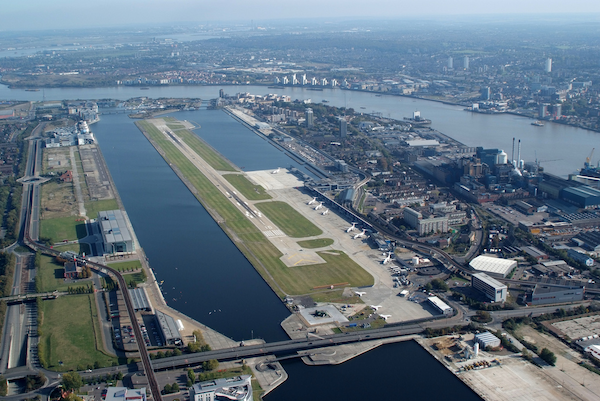
Crossover jets may be becoming more popular among airlines, but there is one airport where almost the entire schedule is comprised of the small airliners.
London City (LCY) is that increasingly rare facility: an international airport close to the center of the city it serves. In this case, LCY lies around 6 mi. east of the center of the UK capital, in a formerly abandoned docklands setting that in the 1990s was redeveloped into a major financial district.
As is now fairly well known, the airport has the challenging combination of a short (1,500-m/ 1,640-yd) runway and high buildings just a couple of miles from its western threshold. This necessitates an approach rate of 5.5°, almost double the normal 3°, which is usually achieved by a modification to the aircraft’s software.
It is a sign of the airport’s significance that both Embraer and Airbus spent the necessary time and money to have new software developed and certificated, to allow the E1 and E2 generations of the former company’s E-Jet and the latter’s A220 to operate into the London site. (The Sukhoi Superjet also achieved this distinction.)
The result is that, today, a remarkable 94% of aircraft using London City are crossover jets. British Airways (in the form of its CityFlyer subsidiary), KLM CityHopper, Lufthansa and LOT use the Embraer E190, while Swiss and ITA Airways use the Airbus A220.
The only regular LCY operators not to use crossover jets at the airport are Luxair (De Havilland Dash 8-400s) and Loganair (ATR 42s).
The jets primarily serve a group of destinations in Western Europe. These were initially mainly business destinations such as Amsterdam and Frankfurt, given the preponderance of business fliers who used the airport. However, with the split between business and leisure travelers now hovering round the 50-50 mark, the jets are increasingly flying to Mediterranean holiday destinations as far away as the Greek islands.
